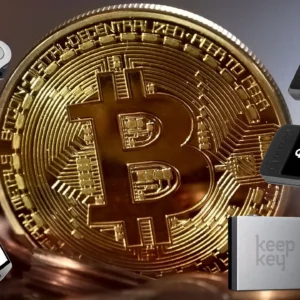Introduction
In the evolving financial world, tokenization has emerged as one of the most transformative advancements in recent years, with potential to revolutionize everything from investment structures to asset management.
Leading global financial institutions have started exploring this innovative approach, with UBS recently making headlines for its Ethereum-based tokenization initiative, the uMINT fund. Through uMINT, UBS is leveraging blockchain technology to enable unprecedented access to various assets by digitizing them into tokens that can be traded and managed with enhanced efficiency and security.
This blog will explore the implications of UBS’s Ethereum-powered uMINT fund, delving into the benefits, challenges, and the broader impact of tokenization on the financial sector.

The Rise of Tokenization: What It Means for Finance
Defining Tokenization
Tokenization involves converting ownership rights of an asset, whether tangible or intangible, into a digital token on a blockchain. These tokens, typically housed on blockchain networks like Ethereum, represent a new form of digital ownership that can be securely transferred and tracked.
Tokenization enables fractional ownership, broadening access to assets that traditionally had high barriers to entry, like real estate, private equity, or fine art. The concept is transformative as it brings liquidity, transparency, and efficiency to markets often defined by illiquidity and operational complexity.
Why Ethereum?
As UBS moves forward with tokenization, its choice of Ethereum as a blockchain foundation is notable. Ethereum is an established and widely adopted blockchain with smart contract functionality, which enables programmable transactions and automation of complex financial processes.
Ethereum’s robust development ecosystem and history of supporting various financial applications make it an attractive choice for institutions like UBS. By leveraging Ethereum, UBS ensures compatibility with a large network, along with the security and transparency inherent in Ethereum’s public blockchain infrastructure.
Benefits for the Financial Sector
Tokenization could lead to profound changes in finance by enabling faster transactions, reducing intermediaries, and lowering costs. Traditional assets that require complex legal and administrative oversight can be tokenized, digitized, and traded on-chain, making transactions almost instantaneous. Additionally, Ethereum’s uMINT project could make investment accessible to a more global audience by removing geographical and capital limitations.
UBS’s uMINT Fund: A Deep Dive
What is UBS’s uMINT?
The uMINT fund represents UBS’s foray into tokenized assets on the Ethereum blockchain. This Ethereum-based fund seeks to offer a new level of efficiency in asset management by integrating traditional financial assets with blockchain technology, making UBS one of the few global banks to adopt tokenization actively. The uMINT project allows UBS to tokenize real-world assets, offering institutional and accredited investors the ability to buy, sell, and hold digital representations of assets on the blockchain.
Key Features of the uMINT Fund
- Fractional Ownership: Through the uMINT fund, UBS offers fractional ownership of high-value assets, enabling investors to own portions of assets rather than purchasing them outright. This increases accessibility and flexibility in portfolio management.
- Enhanced Liquidity: Assets tokenized on Ethereum have the potential to be traded or exchanged with greater ease than traditional investments, bringing liquidity to markets that are typically hard to sell quickly.
- Secure and Transparent Transactions: Ethereum’s transparent blockchain infrastructure ensures that all transactions are publicly verifiable and secure, creating a new standard of accountability in financial transactions.
UBS’s Strategy and Vision for uMINT
UBS is positioning uMINT not only as a product but as a pioneering effort in integrating blockchain into traditional banking. UBS aims to utilize Ethereum’s programmability to automate compliance checks, streamline reporting, and provide a secure digital ledger of ownership. This is part of UBS’s long-term vision to digitize its asset management, capital markets, and private banking services, making them more accessible to a digital-first generation of investors.
Advantages and Challenges of Tokenization
Advantages of UBS’s Tokenization Approach
- Lower Operational Costs: Tokenization reduces reliance on intermediaries, which can significantly lower transaction fees and operational costs.
- Increased Accessibility: By allowing fractional ownership, tokenized assets lower entry barriers, enabling more people to participate in high-value investments.
- Efficient Transactions: Blockchain allows real-time transaction settlement, reducing the time lag associated with traditional banking processes.
Challenges and Regulatory Considerations
While the advantages are compelling, UBS’s approach with the uMINT fund also faces several challenges:
- Regulatory Uncertainty: Regulatory frameworks for tokenized assets are still evolving. UBS must work within varying global regulations to ensure compliance, especially as blockchain technology often operates in a gray area between traditional finance and decentralized assets.
- Security Concerns: Although Ethereum is secure, smart contract vulnerabilities or potential network congestion can create risks. UBS must rigorously audit its blockchain applications to mitigate these threats.
- Market Adoption: Tokenization is still a nascent concept, and mainstream adoption in traditional finance may take time. UBS’s success with uMINT depends on its ability to educate investors and build confidence in this new asset class.
Tokenization Beyond UBS: The Industry’s Broader Movement
Institutional Adoption of Tokenization
UBS is not alone in recognizing the transformative potential of tokenization. Several other institutions have started exploring blockchain for tokenized assets:
- JP Morgan’s Quorum: Another Ethereum-based initiative, JP Morgan’s Quorum, focuses on tokenizing assets for interbank transactions, offering enhanced security and efficiency.
- BlackRock and Goldman Sachs: Both of these major financial entities have experimented with tokenized securities to streamline trading and compliance.
- Central Banks and Governments: Various central banks are researching and piloting central bank digital currencies (CBDCs), which are fundamentally tokenized national currencies on blockchain networks.
The Role of Ethereum in Financial Transformation
Ethereum has become a de facto standard for financial applications due to its stability, developer ecosystem, and smart contract capabilities. The Ethereum blockchain, thanks to its compatibility with multiple financial protocols and decentralized applications (dApps), has been pivotal in helping the finance industry move towards decentralized solutions, including decentralized finance (DeFi). The integration of traditional finance with Ethereum-based solutions, as seen with UBS’s uMINT fund, suggests a future where public blockchains play a central role in institutional finance.
Conclusion
UBS’s launch of the Ethereum-based uMINT fund signals a significant shift in the financial industry’s adoption of blockchain technology and tokenization. By tokenizing assets on Ethereum, UBS is not only modernizing its asset management approach but also paving the way for a broader acceptance of blockchain in traditional finance. The rise of tokenization could redefine how we understand ownership, investment, and financial accessibility.
As the technology advances and regulatory frameworks adapt, tokenization has the potential to make global finance more inclusive, transparent, and efficient. UBS’s uMINT fund is a step forward in realizing this vision, establishing a pioneering model for other institutions to follow.
Do you think tokenization will transform how we invest in the future? Leave a comment below to share your thoughts on UBS’s uMINT fund and the role of Ethereum in financial innovation!






